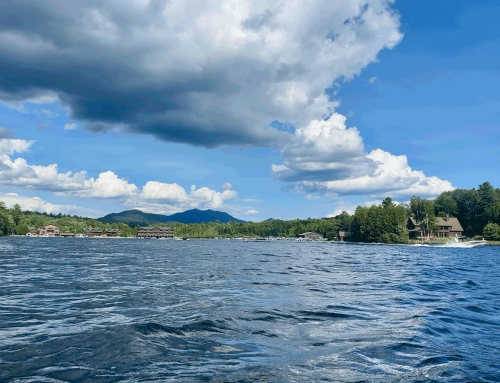A major new program in Governor Andrew’s Cuomo’s 2018-19 state budget is the Empire Forests of the Future Initiative, referred to as “EFFI.” This new program seeks to overhaul and modernize two longstanding “Preferential Forest Tax Law Programs” known by the shorthands “480” and “480a” for their respective parts of the Real Property Tax Law. These programs provide tax exemptions for forestland owners who enroll their lands and manage them for long-term for forestry purposes.
Versions of the 480 law, known as the Fisher Act, have been around since the 1920s. A newer forestland tax subsidy law program 480a was started in 1974, when the Fisher Act program was frozen and closed to new enrollments. These laws provide enrolled landowners with a tax subsidy of up to 80%, depending on the program and their time of enrollment.
While the state grants this tax exemption, it’s local governments that absorb the fiscal hit. The state argues that the exemptions help to maintain the forest products economy, which it claims supports 100,000 jobs across New York, mostly upstate. For many years there was no state reimbursement for lost tax revenues due to 480/480a enrollments. Governor George Pataki started a modest program to aid some communities that experienced a 1% or greater overall tax shift as a result of these forest tax law programs. He allocated $1.5 million for this and created a list of eligible towns and made the pay-outs through state Aid to Localities. This continues today and about 20 towns receive payments through this program, including a dozen in the Adirondacks.
Across New York, roughly 300,000 acres are enrolled in the old Fisher Act 480 program and around 1.2 million acres are enrolled in 480a. The great majority of these lands are industrial forestlands, owned by Timber Investment Management Organizations (TIMOs) or Real Estate Investment Trusts (REITs) or clubs. There are also many private landowners with acreages ranging from 50 to several thousand acres or more. About half of the total enrolled lands are in the Adirondacks.
The requirements for landowners in 480 are modest. There is no forest management plan mandated and a 6% stumpage payment is required to be made on timber sales from enrolled properties, but payments are made on the honor system by the landowner. The 480a program sought to strengthen requirements. Landowners are required to enroll for 10-year-terms, submit a forest management plan for approval by the DEC, undertake forest harvests according to its plan, notify DEC of harvests and submit stumpage payments to them. DEC maintains a list of consulting foresters that it recommends for development of management plans.
The DEC estimates that there is now over 19 million acres of forestland in the state, of which over 14.5 million is privately owned. What’s interesting is that the DEC estimates that the amount of privately owned forestland in New York has grown by over 1 million acres in the past 20 years as farmland has been abandoned and reforested. Only about 10% of the state’s private forestland is enrolled in the current 480/480a programs. Other states, like Vermont and New Hampshire, see more than half of their private forestlands enrolled in similar forest tax programs.
The other thing that DEC research has found is that the number of private forestland owners has grown markedly, now around 685,000 landowners, whereas 10 years ago there was around 500,000. This is a result of reforesting farmlands, but also due to forest fragmentation and growth of vacation homes and rural sprawl on small forest plots of 50-250 acres throughout Upstate NY.
In New York, the state has long been in the business of protecting forestlands through the Forest Preserve in the Adirondacks and Catskills, which totals over 3 million acres, state parks, and wildlife refuges, as well as protecting commercially managed forestlands through 700,000 acres of state forests, over 800,000 acres of conservation easements, and forest tax law programs aimed at ensuring a continuous fiber supply to support secondary woods products manufacturing in the state. The DEC sees the 13 million acres of private forestlands across New York that is not enrolled in 480/480a as a massive untapped resource that is often poorly managed resulting in a massive squandered opportunity. The new 480b program aims to vastly expand enrolled forestlands and to improve commercial forestland management.
Various versions of EFFI, or some kind of mythical new “480b” program, have been around for decades. I have participated in various forums about a new 480b program since the mid-1990s. Advocates and forestland owners campaigned for reforms for decades, seeking new program features that would enable participation by forestland owners who do not want to solely harvest trees, but rather manage for habitat, wildlife or open space. Farmers sought inclusion for open agricultural lands as well as forestlands. Landowners sought to open eligibility to landowners with smaller tracts below the current 50-acre threshold. Advocates wanted a climate change component that allowed forests to be managed for carbon sequestration. Others advocated for improvements in standards for forest management plans, standards for loggers and foresters, neighbor notification requirements before a timber harvest, higher tax exemptions for landowners that maintain SFI/FSC sustainable forestry certification, among many things. EFFI contains many long-advocated program fixes and reforms that have been widely advocated over the years while updating and modernizing the overall program.
EFFI provides two types of enrollment programs for new landowners. The “480b Forest Certification Program” provides a 70% tax exemption to landowners with 25 acres of more of contiguous forestland. This program is focused on commercial forest management and relies upon a landowner obtaining an approved sustainable forestry certification program (SFI, FSC) as an entrance requirement. This will be difficult for many small landowners, but the state is also planning on offering financial assistance and working to build group certification cooperative programs across the state. This program requires a 10-year enrollment period to start, which is extended each year.
The second enrollment program is the new “480b Forest Practice Program.” This provides a 40% tax exemption to landowners with 25 acres of more of contiguous open space lands. This program is open to landowners with agricultural lands where at least 50% is forested and landowners who wish to manage their lands for environmental purposes beyond commercial forest management, such as water quality protection, reforestation, a sugar maple stand, wildlife habitat, invasive species control, riparian buffers, wetlands protection, among other possibilities. To qualify, landowners would have to demonstrate that they completed a verifiable environmental stewardship activity on 10 acres of their lands within two years of enrollment.
Neither program requires a stumpage tax. Both programs require a 10-year enrollment commitment. Details for both programs would be enumerated in DEC rules and regulations once the legislation passed.
EFFI also makes a series of important reforms that will notably improve the program. At the outset it doubles the state’s reimbursement funds to $3 million for communities that experience a greater than 1% tax shift. Enrollments will be closed for 480a, but this program will continue for enrolled landowners. Landowners enrolled in 480a will be allowed to convert to 480b.
EFFI also includes another big advance in commercial forestry regulation in New York by requiring state notification of a timber harvest of 10 acres or more. This requirement would become law for all landowners, not just landowners enrolled in one of the Preferential Forest Tax Law programs. This information will provide DEC and the public with important information about the types of forest management undertaken, the foresters and loggers involved in this work, harvest information and use, among other things. Most other states have some form of timber harvest notification and New York is one of the few that does not. This is an important reform.
On balance, the proposed changes in the 480b program mark an important milestone in New York for incentivizing forestland ownership and helping landowners, many of whom are land rich and cash poor, and many of whom have had forestlands in their families for generations, to keep their forestlands as forestlands and not subdivided and developed. The greatest threat to New York’s forests is fragmentation and development into ever smaller and smaller parcels. Protect the Adirondacks will be lobbying and advocating in support of this new program during the 2018-19 budget negotiations.
Protect the Adirondacks will lobby and advocate for passage of this new program as part of the new 2018-19 state budget.
Follow Protect the Adirondacks on Facebook.
Follow Protect the Adirondacks on Twitter.






